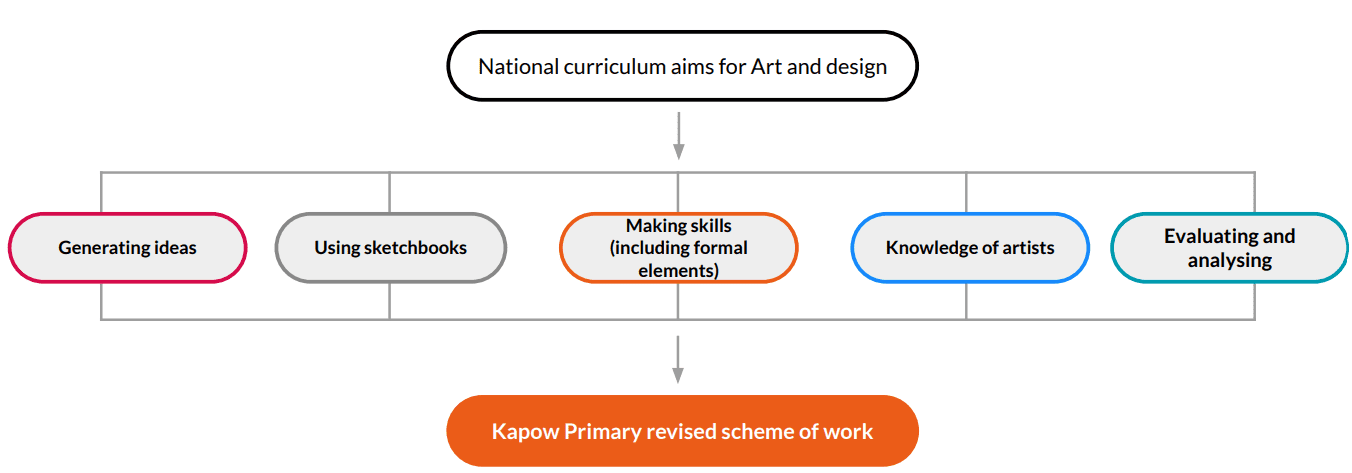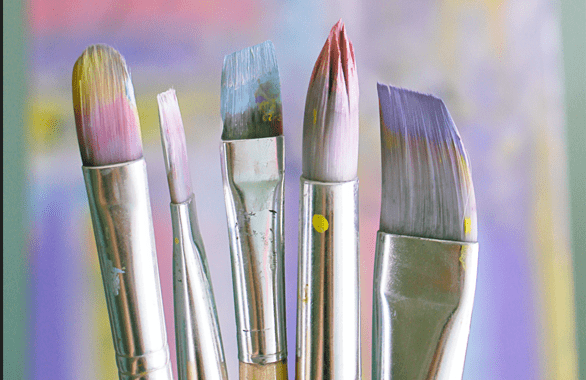Art at SMC
Subject Leader: Danielle Chisholm
At St Margaret Clitherow Catholic Primary Academy, we value Art and Design as an important part of the children’s entitlement to a broad and balanced curriculum. Art and Design provides the children with the opportunities to develop and extend skills and an opportunity to express their individual interests, thoughts and ideas.
Our Art Curriculum educates, engages, inspires and challenges pupils, equipping them with the knowledge and skills to experiment, invent and create their own works of art. All our lessons are built on five pillars: generating ideas, using sketchbooks, making skills (including formal elements), knowledge of artists and evaluating and analysing.
Art is a taught as a stand-alone subject , split into the strands of drawing, painting and sculpture with links being made to other areas of the curriculum where those links are strong. In EYFS, children are provided with a wide range of opportunities to explore media and materials and develop their creative skills. This is built on throughout KS1 and KS2 via a more structured approach. Vocabulary is also given a central focus due to the low literacy and EAL entry points of the children to the school.
As children progress, they become proficient in drawing, painting, sculpture and other art techniques. Skills are developed to help them evaluate and analyse creative works using the language of art. Children learn about great artists, craft makers and designers, and understand the historical and cultural development of their art forms.
To find out more about the Art Curriculum at SMC, please read the Art Policy below.

At St Margaret Clitherow Primary Academy, we use the Kapow scheme of Art which supports pupils to meet the national curriculum end of key stage attainment targets and has been written to fully cover the National Society for Education in Art and Design’s progression competencies.
Three units of Art taught are within each academic year. Whilst some cross-curricular links may be observed to enrich and extend the teaching in other subjects, Art is taught as a subject in its own right.
The Kapow Art scheme of work is designed with five strands that run throughout.


Units of lessons are sequential, allowing children to build their skills and knowledge, applying them to a range of outcomes. The formal elements, a key part of the national curriculum, are also woven throughout units. Key skills are revisited again and again with increasing complexity in a spiral curriculum model. This allows pupils to revise and build on their previous learning.
Children in Years 1-6 use sketchbooks. Sketchbooks are an essential record of an individual child’s experiences and ideas throughout a year and key stage and will be seen as evidence for assessment and reporting purposes.
Teachers will also obtain evidence by direct observation of children at work, questioning pupils or listening to their conversations, Using the sketchbooks and observations in lessons, teachers will then assess children for each unit on OTrack at the end of each term. At the end of each academic year, teachers will share with you whether your child is working at, above or below age-related expectations.
To find out more about the Art Curriculum at St Margaret Clitherow, please read our Art Intent Document below:
Find out more about the Art Curriculum at SMC
- Art and Design National Curriculum
- Art and Design Progression Map
How to encourage Art at home
Get messy!
Try to get hold of as many different types of drawing and painting resources as you can to let your child get creative and explore creating art using different materials. Paints, chalk, crayons, pens, pencils, modelling clay and much more can be found in discount shops. Just don’t forget to put lots of newspaper down first!
Use household objects creatively
Alternatively, instead of buying materials, let them get creative using objects around the house – for example, pasta and pulses to create pictures using glue.
Keep a sketch book
Encourage your child to keep a sketch book. Suggest that they take it with them when they go out so that they can look for things to sketch – a tree, a building, a scene. Alternatively, if they see something they would like to draw, take a photo on your phone and let them sketch from it when they are home.
Celebrate your child’s art
Praise your child’s creations and encourage them not to get disheartened if they feel they have made ‘mistakes’. Explain that art is about being creative and trying out different things. There is no right or wrong way to do things. You could even ‘frame’ their work using coloured paper or card and create a little gallery on the kitchen wall or in their bedroom to display their work.
Discuss and enjoy art together
Find out about local art galleries or museums that you can visit with your child. Encourage them to talk about what they see and to share their opinions – about subject matter, colours, what materials the artist used, and so on.
Useful Websites
The Artful Parent
https://artfulparent.com/kids-arts-crafts-activities-500-fun-artful-things-kids/
You can access over 500 arts and crafts activities, including painting, sculptures and printmaking. This site gives you ideas of what Art supplies to provide for your child in order to create and make different things.
Art for Kids hub
https://www.artforkidshub.com/
You can watch step by step videos on how to draw different things, origami for children, how to paint, holiday and celebratory art projects and projects related to the Seasons. It also gives you a list of the resources you will need before completing each art project.
Land Art for Kids
A website which gives you ideas on how to collect natural resources to produce different forms of Art.
Tate Kids-The Best Art Website for Kids
https://www.tate.org.uk/kids?gclid=EAIaIQobChMIu8WF6J_C6QIVVeDtCh04qwjXEAAYAiAAEgKMGPD_BwE
Children can follow instructions to make different things, play art games and quizzes and explore and read about the work of well-known artists.
BBC Bitesize Art and Design
https://www.bbc.co.uk/bitesize/subjects/z8tnvcw
You can watch class clips on famous artists, techniques and how to create different things.






